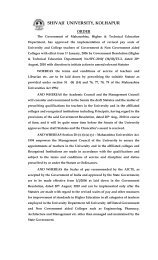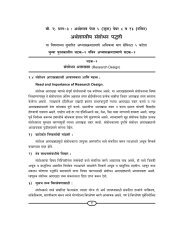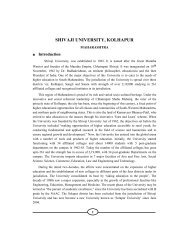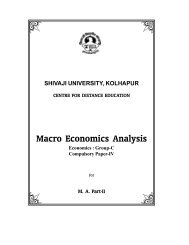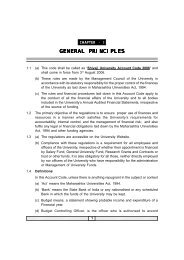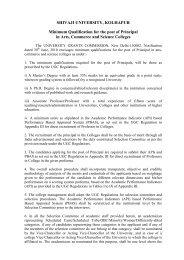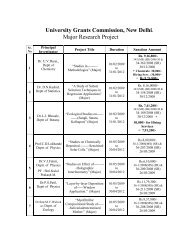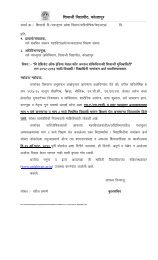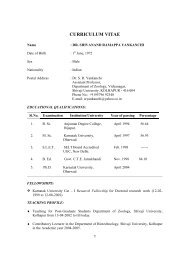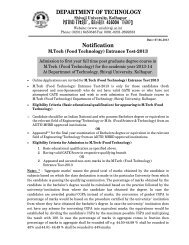Economics(Paper-4) - Shivaji University
Economics(Paper-4) - Shivaji University
Economics(Paper-4) - Shivaji University
Create successful ePaper yourself
Turn your PDF publications into a flip-book with our unique Google optimized e-Paper software.
its over-enthusiasm for capital formation. Today, development depends increasingly<br />
upon technique and less on direct capital formation in productive processes.<br />
6. Not Supported by History:<br />
The big push theory seems to suggest that whenever a large scale influence is<br />
exerted on the process of capital formation, a stationary economy probably begins to<br />
develop. Furtado stated that this is not confirmed by history.<br />
2.2.4 Myrdal’s Theory of Circular Causation<br />
Prof. Gunnar Myrdal maintains that economic development results in a circular<br />
causation process results in rapid development of developed countries while the weaker<br />
and backward countries tend to remain behind and poor.The theory of circular causation<br />
has been built upon the two effects viz. the backwash effects and the spread effects.<br />
The circular causation theory emphasizes that poverty is further perpetuated by poverty<br />
and affluence is further promoted by affluence. In backward regions problems created<br />
more problems; in developed regions solutions solve all problems. There is a failure<br />
story and there is a success story.<br />
The rebounded effects and circular causation effects are the net result of the<br />
backwash effects and spread effects.<br />
In an underdeveloped country, the backwash effects are predominant and the<br />
spread effects are dampened. This tends to regional inequality as well as international<br />
inequality.<br />
The traditional theory is not able to explain the problem of development in underdeveloped<br />
countries and it is based of unrealistic assumptions of stable equilibrium.<br />
Myrdal builds a new theory of economic under development and development which is<br />
capable of solving regional and international inequalities on national and international<br />
plans. He tries to explain his theory with ‘Backwash’ and ‘Spread’ effects.<br />
1. Backwash Effects : Myrdal defines backwash effects as, “all relevant adverse<br />
changes….of economic expansion in locality….caused outside the locality. I include<br />
under this label the effects viz. migration, capital movements and trade resulting from<br />
the process of circular causation between all the factors, ‘noneconomic’ as well as<br />
‘economic’”. In short, ‘backwash effects’ have unfavourable effects of economic<br />
expansion.<br />
The migration of people from backward regions results in regional imbalances.<br />
The developing economy will attract young and active people from other parts of the<br />
country.This will tend to favour the developing region and will depress the other backward<br />
region from where people migrate.<br />
Capital shifted from poorer region to prosperous where the rate of return is high<br />
and capital is more secure. Therefore the poor regions make poorer again. Another<br />
123456789012345678901234567890121234567<br />
123456789012345678901234567890121234567<br />
26<br />
123456789012345678901234567890121234567<br />
123456789012345678901234567890121234567<br />
123456789012345678901234567890121234567<br />
123456789012345678901234567890121234567<br />
123456789012345678901234567890121234567<br />
123456789012345678901234567890121234567



